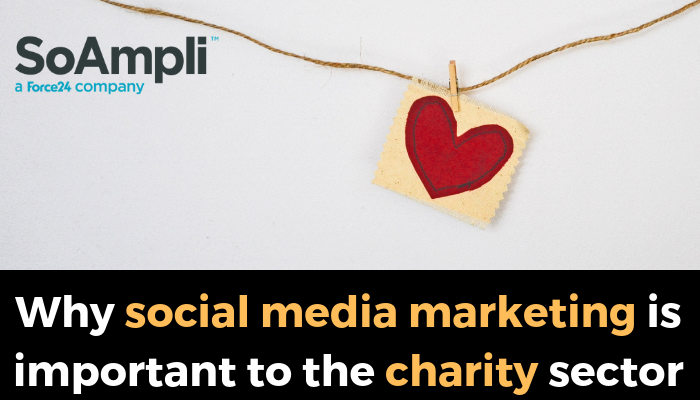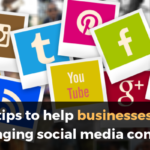It’s not an overnight success when charities encourage people to part with their hard-earned cash – it takes patience, a real understanding of what people want to hear, and an explanation as to why they should help.
GDPR has certainly made things more challenging for charities too. It’s caused organisations to redefine their proposition and regain the trust they once had, alongside ensuring their communications are compliant and something stakeholders are happy to receive.
Therefore, now more than ever, charities are having to work even harder to connect online with those willing to donate vital funds. Supporters need to understand the major role they play in keeping life-saving research going – and that the cause it helps – would ultimately struggle without donations.
That’s where social media marketing can play a huge part in making an organisation stand out in a saturated sector, and drive towards developing trust for charities. With an effective online strategy in place – and a key understanding of targets – effective, relatable and timely messaging can also help in the quest to build crucial relationships.
But it’s not easy. It takes time and creativity to get people emotionally invested in a cause. So, how can organisations attract their desired beneficiaries? Here are four places to start…
1. Offer something an audience wants to read
A charity with a skill in storytelling can help stakeholders become personally affiliated because strong content, that lands well, is more likely to stick.
Organisations also have to understand that supporters might not be placing the same importance on marketing messages anymore, because they prefer to buy from people over brands. So, they must think of savvier ways to connect and show beneficiaries they’re ‘just like them’.
Taking a leaf out of the British Heart Foundation’s book, this is something the charity giants recognised in its quest to engage, and inform, a wide base of advocates across the country.
The UK charity wanted to speak directly with beneficiaries and supporters, and so used SoAmpli’s multichannel sharing platform to access a pool of posts for staff and volunteers to independently share, giving them a trusted voice online.
Implementing such a sustained effort to connect in a reliable way resulted in over 14,800 shares, a 23 million reach and more than 80,000 click-throughs.
2. Time communications effectively
Content has to be fresh and relevant in order to encourage interaction from audiences. But if it’s rolled out when engagement is low, what’s the point?
A well-thought-out strategy should go some way to understanding the quirks of beneficiaries – such as what time and days they log on – all of which should be analysed every single day.
Why? Because using valuable insights to determine how individuals tick shouldn’t ever be overlooked. A marketing automation tool can go even further in helping with this ongoing research – by finding out how they prefer to be targeted.
Important key information must be understood, utilised and brought into a social media strategy that can be adapted so it reaches the most relevant personas, and capitalises on buyer trends in the most effective ways
3. Be human
Referring back to the content discussed in the first point, it’s clear when it comes to donations that people want to be informed with exactly who they’re helping. They want to be told details – especially ones they can relate to.
Social media marketing has the power to do this. Strong posts and campaigns can create ‘online heroes’, such as someone needing life-saving surgery, or an animal on the verge of extinction, for people to help.
Thinking about it, it’s no coincidence that ‘characters’ are named in charity pleas, and visual elements are impactful and humanistic to tell their story. Why? Because it creates a real-life situation where others think ‘that could be me’, and appeals to their giving nature.
However, stories only really work if they’re honest and genuine – so it’s just as important for the charity to translate such powerful words authentically so that it lands perfectly with a desired audience.
4. Don’t do a hard sell
Marketers are very savvy in this department because there will always be a call to action in charitable messaging. It’s usually along the lines of outlining how donations are less than a cup of coffee, or how a small amount can help a cause for days, weeks and even months.
But the communication shouldn’t end there. A direct link to provide funds should be accompanied by a strong, emotive message that offers something in return – otherwise they will simply be put off if all a foundation is doing, is asking for cash.
A ‘sell, sell, sell’ mentality will struggle with longevity because it comes back to the value and trust an organisation offers – and what an audience wants. If the content isn’t there to support the call to action, there won’t be as many funds raised.
It’s vitally important for charities to speak in an engaging and thought-provoking tone, as well as deliver insight and knowledge for people to connect with in a personalised way. Supporters need a crucial reason to hand over their hard-earned cash – so give it to them!







